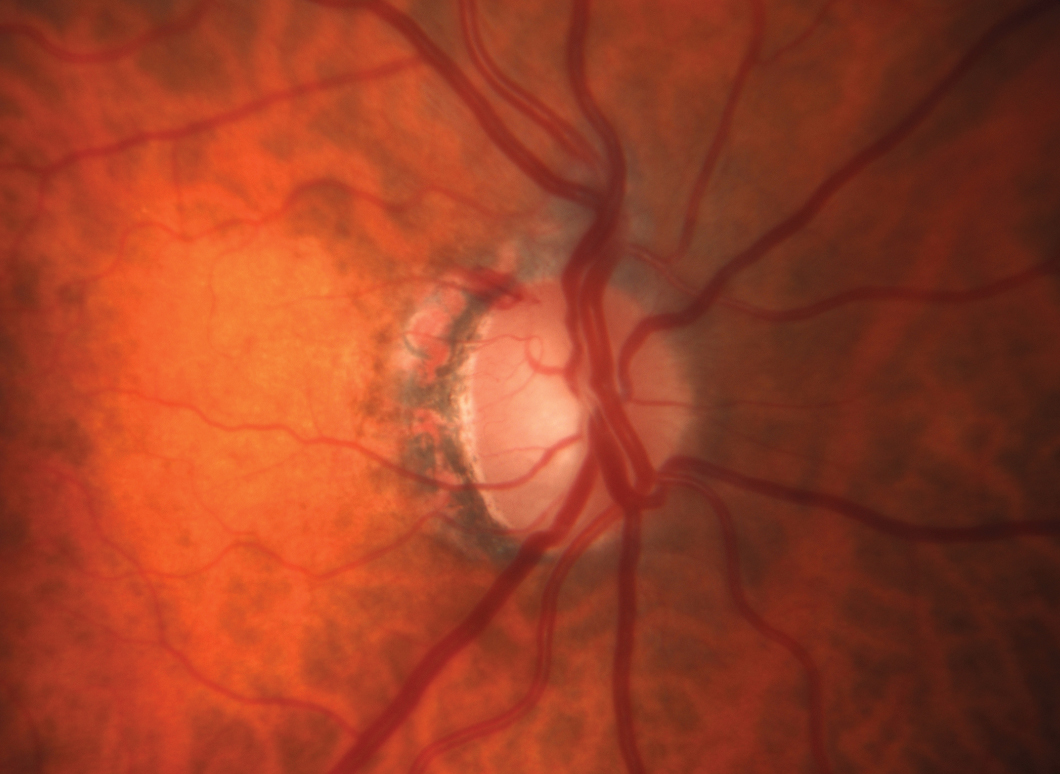 |
| Research is looking into transplantation of stem cells to restore trabecular meshwork function in glaucoma patients. Photo: Michael Chaglasian, OD, and Sarah B. Klein, OD. Click image to enlarge. |
Current glaucoma therapies are limited to altering the eye’s intraocular pressure (IOP), but a recent review article proposes another possible therapy pathway: stem cells. Glaucomatous eyes have reduced cellularity in the trabecular meshwork, which has been linked to elevated IOP in mouse models. The authors of the review article wrote that repairing cellularity may improve aqueous outflow, prevent retinal ganglion cell apoptosis and prevent vision loss from elevated IOP. They proposed further investigation into the use of stem cells to not only replace but also proactively protect the trabecular meshwork cells. “That could revolutionize the management of glaucoma,” they wrote.
Trabecular meshwork stem cells were first discovered in 1989 in a study that also demonstrated that these resident stem cells can be stimulated to repopulate an area of laser-damaged tissue in human post-mortem eyes. Subsequent studies on human eyes reported that the number of trabecular meshwork stem cells decreases with age and that this decrease is likely associated with diminished cell reproduction capacity. Other in vivo mouse model studies found that these stem cells can expand in vitro and preferentially integrate in vivo into the trabecular meshwork region to become functional after transplantation.
Native trabecular meshwork cells, adipose-derived and bone marrow-derived mesenchymal stem cells and induced pluripotent stem cells can all be differentiated into trabecular meshwork-like cells and have been successfully integrated into live mouse models to bring about IOP homeostasis. So far, studies indicate these cells remain stable for extended periods of time without serious side effects.
The review paper authors noted that a human clinical study should be the next step toward developing this novel treatment further. While studies in larger animals first would be ideal, they say there isn’t a good animal analogue of the trabecular meshwork changes that occur in humans with primary angle-closure glaucoma.
Adipose-derived mesenchymal stem cells are the prime stem cell candidate for human trials, according to the authors. One advantage of these stem cells is that they’re autologous, which would decrease the risk of immune rejection. They’re also easily obtained through minimally invasive procedures and have a low risk of tumorigenesis (which is rare anyway).
The authors concluded, “Transplantation of human stem cells to restore trabecular meshwork function in glaucomatous eyes is a potentially vision-saving, revolutionary treatment that could impact the lives of millions.”
Coulon SJ, Schuman JS, Du Y, et al. A novel glaucoma approach: stem cell regeneration of the trabecular meshwork. Prog Ret Eye Res. April 6, 2022. [Epub ahead of print]. |

